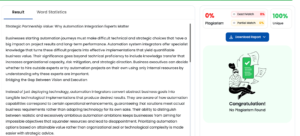In an increasingly digital world, your church’s online presence is more important than ever. Whether you’re looking to attract new members, engage with your congregation, or share your message with the world, a well-designed website can serve as your digital sanctuary. So, let’s explore the key principles and best practices for crafting a church website that inspires, informs, and connects.
Why Church Website Design Matters
Your church website is often the first point of contact for visitors seeking information about your congregation, events, and beliefs. Just like the physical space of your church, your website should reflect the values and identity of your community. Here’s why church website design is crucial:
- Welcoming First Impressions: A visually appealing and user-friendly website creates a positive first impression and invites visitors to explore further.
- Building Community: Your website serves as a digital hub for your congregation, offering resources, event calendars, and ways to connect with fellow members.
Essential Elements of Church Website Design
Designing a church website requires a thoughtful approach that balances aesthetics with functionality and purpose. Here are some key elements to consider:
- Clear Navigation: Make it easy for visitors to find what they’re looking for by organizing your website with clear navigation menus and intuitive categories.
- Engaging Visuals: Use high-quality images, videos, and graphics to capture the spirit of your church and showcase your community in action.
- Interactive Features: Incorporate interactive elements such as event calendars, online giving options, and prayer request forms to encourage engagement and participation.
Creating a Welcoming Online Experience
Just like welcoming visitors into your physical church, your website should create a warm and inviting atmosphere for online visitors. Here are some tips for creating a welcoming online experience:
- Tell Your Story: Use your website to share the story of your church, its history, mission, and values. Personal anecdotes and testimonials from members can help visitors connect on a deeper level.
- Highlight Ministries and Outreach: Showcase the various ministries and outreach programs offered by your church, along with opportunities for involvement and volunteerism.
- Include Visitor Information: Make it easy for newcomers to learn about service times, locations, and what to expect when visiting your church for the first time.
Embracing Accessibility and Inclusivity
Inclusivity is at the heart of the gospel, and your website should reflect that ethos by being accessible to all. Here are some ways to ensure your church website is inclusive:
- Mobile Optimization: With many people accessing the web on mobile devices, ensure your website is optimized for smartphones and tablets for a seamless browsing experience.
- Accessibility Features: Incorporate features such as alt text for images, keyboard navigation, and high contrast options to make your website usable by individuals with disabilities.
Essential Pages for Your Church Website
When it comes to designing a church website, certain pages are essential for effectively communicating with both current members and potential visitors. One of the most important pages is the “Home” page, serving as the digital front door to your church. This page should welcome visitors with an inviting layout, captivating imagery, and clear navigation to other key sections of the website. It’s also an opportunity to showcase upcoming events, highlight recent sermons or blog posts, and provide quick access to essential information such as service times and location. By crafting a compelling Home page, you can make a positive first impression and encourage visitors to explore further.
Another crucial page for a church website is the “About Us” or “Our Story” page. This is where you have the chance to share the rich history, mission, and values of your church with visitors. Include information about your church’s founding, its beliefs and doctrines, and the various ministries and outreach programs it offers. Personal testimonials from members can add authenticity and help visitors connect on a deeper level. Additionally, consider featuring bios of key staff members and leadership, providing insight into the faces behind the ministry. By creating an engaging About Us page, you can foster a sense of community and belonging among visitors, inviting them to become part of your church family.
Crafting Compelling Content and Calls-to-Action
Beyond design, compelling content is what keeps visitors engaged and coming back for more. Share sermons, blog posts, and inspirational content that speaks to the hearts of your audience. Don’t forget to include clear calls to action, inviting visitors to take the next step in their faith journey.
In conclusion, church website design is a blend of creativity, functionality, and purpose, aimed at creating a welcoming online space for your congregation and visitors alike. By prioritizing clear navigation, engaging visuals, and inclusive design, you can create a digital platform that reflects the warmth and spirit of your church community. So, let’s roll up our sleeves, embrace the digital age, and spread the good news online.





Be First to Comment